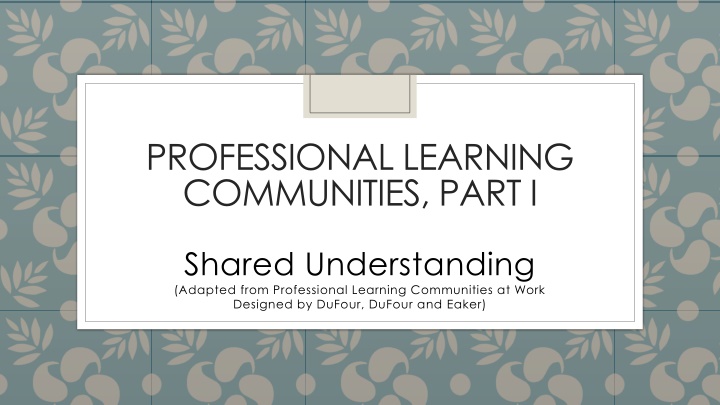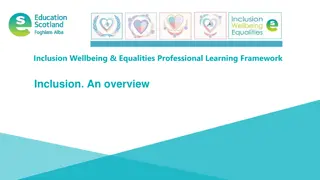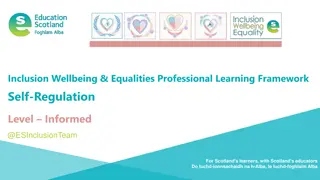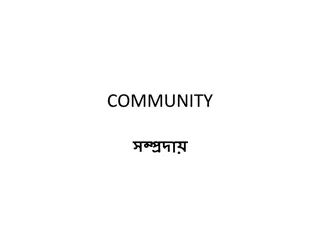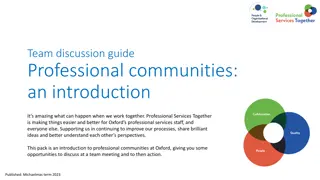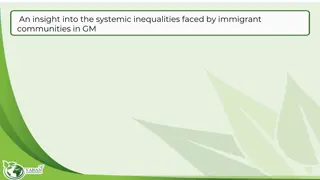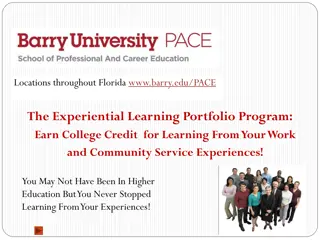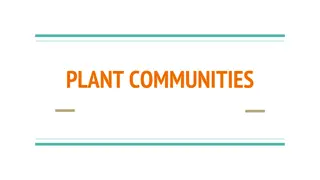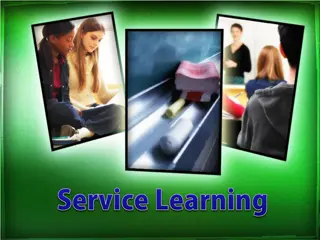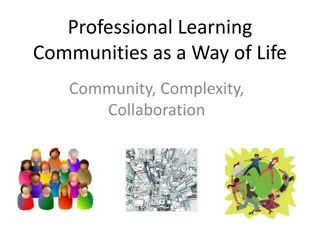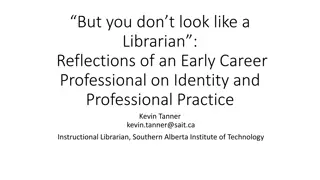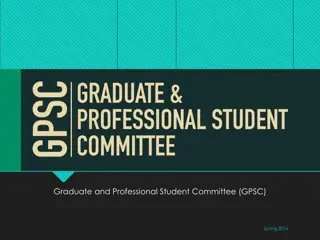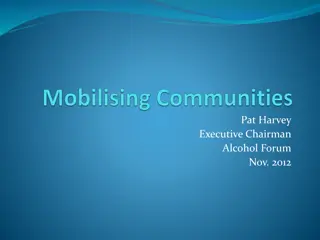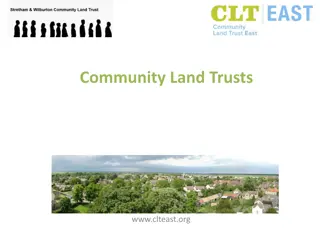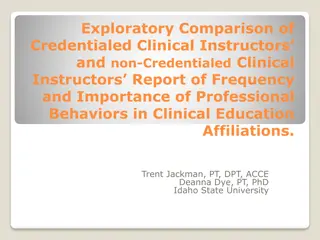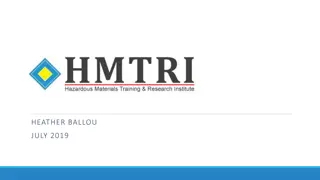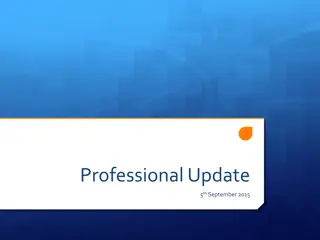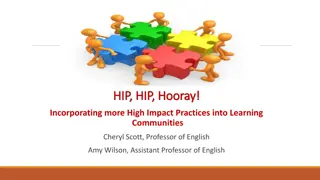PROFESSIONAL LEARNING COMMUNITIES, PART I
Confirming common understanding in Professional Learning Communities (PLCs) for improved student outcomes through collaborative inquiry and action research, focusing on key factors such as data, teamwork, and data-driven decisions.
Download Presentation

Please find below an Image/Link to download the presentation.
The content on the website is provided AS IS for your information and personal use only. It may not be sold, licensed, or shared on other websites without obtaining consent from the author.If you encounter any issues during the download, it is possible that the publisher has removed the file from their server.
You are allowed to download the files provided on this website for personal or commercial use, subject to the condition that they are used lawfully. All files are the property of their respective owners.
The content on the website is provided AS IS for your information and personal use only. It may not be sold, licensed, or shared on other websites without obtaining consent from the author.
E N D
Presentation Transcript
PROFESSIONAL LEARNING COMMUNITIES, PART I Shared Understanding (Adapted from Professional Learning Communities at Work Designed by DuFour, DuFour and Eaker)
Confirming Common Understanding Big Ideas Continued shifts in beliefs and practices
What does PLC mean? An on going- process in which educators work collaboratively in recurring cycles of collective inquiry and action research to achieve better results for the students they serve. -DuFour, DuFour, Eaker and Many (2010)
What Does the Research Say About This Model? The research suggests that in order for significant and sustained school improvement to occur, these key factors must be in place: Efforts must focus on data. Collaborative effort with staff ownership. Staff must be given time. Active learning by staff. Supported by administration/district.
PLC Big Ideas 1. Ensure That Students Learn Learning for All 2. Collaborate Teamwork 3. Focus on Results Data-Driven Decisions
Big Idea #1 Ensure That Students Learn The fundamental purpose of the school is to ensure that all students learn rather than see to it that all students are taught-an enormous distinction. -Raising the Bar and Closing the Gap-Whatever it Takes We accept learning as the fundamental purpose of our school and therefore are willing to examine all practices in light of their impact on learning.
Big Idea #1 Critical Questions of Learning 1. What is it that we expect students to learn? 2. How will we know when they have learned it? 3. How will we respond when they don t learn? 4. How will we respond when they already know it?
Big Idea #1 Ensure That Students Learn Essentials Implementing Monitoring Responding
Big Idea #1 Ensure That Students Learn Essentials Clear, understandable targets are posted. Instruction addresses the target. Assessments address the target. Students receive feedback. Repeat as often as needed
Big Idea #1 Ensure That Students Learn Implementing Targets are displayed, defined and revisited. Students are engaged. Students are having conversations and writing about their learning. Lecture is the best way to get information from the teacher s notebook to the student s notebook without touching the student s mind. -George Leonard
Big Idea #1 Ensure That Students Learn Monitoring Students know the learning target and understand that an assessment will give them information relative to the target. Students receive frequent feedback.
Big Idea #1 Ensure That Students Learn Responding Interventions and extensions are based on the data. These may include flexible grouping and differentiated tasks.
Big Idea #2 Collaborate A systematic process in which we work together, interdependently, to analyze and impact professional practice in order to improve our individual and collective results. -DuFour, Dufour & Eaker We are committed to working together to achieve our collective purpose. We cultivate a collaborative culture through development of high-performing teams.
Big Idea #2 Collaborate Why? Gains in student achievement Higher quality solutions to problems Increased confidence among all staff Teachers able to support one another s strengths and accommodate areas for growth Ability to test new ideas More support for new teachers Expanded pool of ideas, materials, and methods Judith Warren Little (1990)
Big Idea #2 Seven Keys to Collaboration in a PLC Embed collaboration in routine practices of the school. Schedule time for collaboration in the school day and school calendar. Focus teams on critical questions. Make products of collaboration explicit. Establish team norms to guide collaboration. Pursue specific and measurable team performance goals. Provide teams with frequent access to relevant information. 1. 2. 3. 4. 5. 6. 7.
Big Idea #3 Focus on Results We assess our effectiveness on the basis of results rather than intentions. Individuals, teams, and schools seek relevant data and information and use that information to promote continuous improvement.
Culture Shifts in a PLC Traditional Focus PLC Focus Every student will learn Every student can learn Focus on learning Focus on teaching Collaboration Isolation Assessment FOR learning (Formative) Assessment OF learning (Summative) Failure is not and option Failure is an option
PROFESSIONAL LEARNING COMMUNITIES, PART II Shared Practice
Establishing Common Practices Determine Who Participates Identify Essential Components of PLC Meetings Review the Collaborative Cycle Capturing PLC Conversation/Planning Know Your Resources
Building Background Inefficient PLC Teams Efficient PLC Teams
Who Should Participate? Effective school cultures don t simply encourage individuals to go off and do whatever they want, but rather establish clear parameters and priorities that enable individuals to work within established boundaries in a creative and autonomous way. All Licensed Staff Loose vs. Tight Procedures are tight Science of teaching Agreement on what is to be taught is tight Science of teaching How content is taught is loose Art of teaching
Essential Components of PLC Meetings 1. Identify, maintain, and evaluate Team Norms and Roles 2. Construct formative assessments aligned to standard/learning targets 3. Evaluate student progress 4. Celebrate successes 5. Use protocols to move through the 3-Week Cycle
Breaking it Down: Establishing, Maintaining, and Evaluating Team Norms and Roles Why ? What happens if/when a peer .. Shows up without data? Is frequently late or doesn t attend? Doesn t contribute equally to conversation? Appears consistently disinterested? Veers from a PLC focus? When all is said and done, the norms of a group help determine whether it functions as a high-performing team or becomes simply a loose collection of people working together.
Breaking it Down: Construct Common Formative Assessments Aligned to Learning Targets What is formative? inform students, provide feedback and inform instruction What is common? Team agreement What exactly is a CFA? Short and sweet, one or two learning targets
Breaking it Down: Evaluate Student Progress What skills did the proficient students demonstrate in their work that set their work apart? What instructional strategies helped students learn? In what areas did students struggle? Why? (Obstacles, Challenges, Misconceptions)
Breaking It Down Celebrate Successes Do not overlook, or underestimate, the importance of celebrating the successes in your work as a team! Specific goals should be designed to allow teams to achieve small wins as they pursue their common purpose. Small wins are invaluable to building members commitment and overcoming the obstacles that get in the way of achieving a meaningful, long-term purpose. (Katzenbach & Smith, 1993, p. 54)
Breaking it Down: Use Common Protocols to Move Through the 3- Week Cycle Meeting 1, Standard, Targets, designing a CFA Meeting 2, Analyzing data and responding to student needs What do we do with the students who have not learned the target? Meeting 3, New target, designing a CFA Meeting 4, Return to steps identified in Meeting 2
So What? The visual doesn t tell me anything about what meetings should look like. What happens during a PLC meeting? How to PLC, Version 2.0
Acknowledgement Thank you to the following teachers who gave their feedback and developed these protocols! Emma Brock Katelynn Duggan Megan Gonyea Peter Larson Rachel Markell Debbie Rehart Delise Rose Brittanie Sorensen Jerika Spencer Daniel Young
PLC Meeting Cycle Typically a 3-meeting process Your team may take longer. Your team may work more quickly.
Using Protocol Forms to Move Through the 3- Week Cycle PLC Protocol Form 1 and Protocol Form 2 -Fill out during each meeting -Share with administrator after each meeting * Digital copies are on the Teaching and Learning Webpage * Protocol forms may be emailed or printed for your Supervisor * The PLC team should retain a copy
Singletons 1. Common Models Cross discipline Vertical 2. Common skills and outcomes, not grade level/content power standards 3. Venues TwitterforSingletons Google Hangout Reach out to other districts
Checking for Understanding Turn to a partner: Can you identify the 5 components of a PLC meeting? 1. Identify, maintain, and evaluate Team Norms and Roles 2. Construct formative assessments aligned to learning targets 3. Evaluate student progress 4. Celebrate successes 5. Use protocols to move through the 3-Week Cycle
What will this look like at name of school? 2019-2020 professional development calendar Most Wednesday afternoons (at least 27 Wednesdays) add other options here
Application: Agenda Items That Begin Today Item 1: Establish (or Evaluate) Team Norms Please develop/reconfirm team norms Item 2: Fill in as appropriate to your site Item 3: Fill in as appropriate to your site
Reminder: Change is Messy! We can tell we are making progress if . Every staff member participates and contributes. We analyze and reflect upon our teaching. We implement and assess changes. We have honest conversations with each other that help us engage in the process.
HOW SHOULD WE DETERMINE WHAT IS THE RIGHT WORK? THE BEST AVAILABLE EVIDENCE OF POSITIVE IMPACT ON STUDENT LEARNING
Key Dates and Actions September 4th clarify what your site will do September 11th, Agreement on Overarching Power Standards September 18th, PLC Meeting 1, Form 1
Resources National Training, PLC at Work Institute District PLC Handbook Technical Assistance for Singleton Planning Teaching and Learning Website Forms Links to AllthingsPLC Professional Reading School Improvement Teacher Leaders PLC Cadre representatives Administrators
